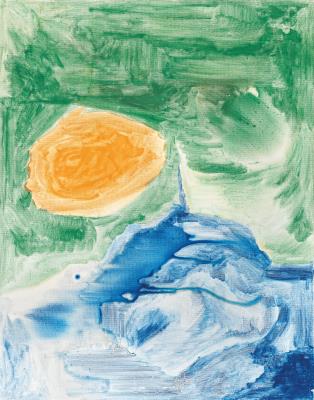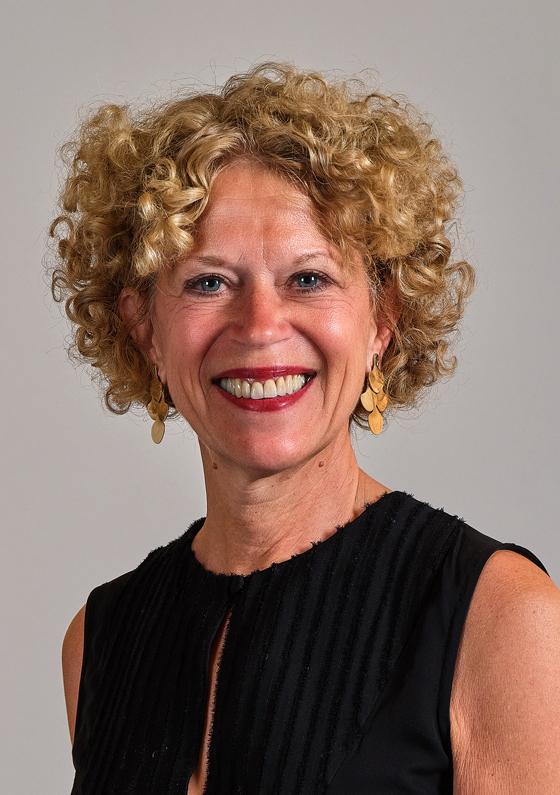Sigmar Polke *

(Oels/Niederschlesien 1942-2010 Cologne)
Untitled, 1994, on the reverse signed, dated twice S. Polke 94, natural resin and pigments (malachite, lapis lazuli and realgar) on canvas, 95 x 75 cm, framed
We are grateful to Michael Trier, Cologne, for his scientific advice in cataloguing this work.
Provenance:
Private Collection, North Rhine-Westphalia - directly from the artist
Van Ham Kunstauktionen, Cologne, 01 December 2021, lot 301 - acquired there by the present owner
Sigmar Polke has left us an extensive oeuvre, centred first and foremost on his irrepressible interest in colour. The production of colours was of great importance to the artist, who was often described as an alchemist, and he wanted to explore it from the bottom up. With the aid of the most modern techniques and motifs he was constantly searching for the origin of painting, sometimes also with a great deal of irony. Art ought to be an experiment with an open outcome, and he, the artist, ought to elicit the hidden beauty from the material world with his works.
Polke worked with the so-called "Schüttbilder" from the early 1970s on, colour samples and "Probierbilder", in which calculated chaos is elevated to a creative principle. Ten years later, Polke's painting showed a change "that was much discussed in connection with the works for the exhibition Zeitgeist in 1982, for Documenta 7 in the same year and reached a climax in his contribution to the German pavilion at the 42nd Venice Biennale (1986). Figuration recedes in favour of the more gestural and process-like use of colour, its lush or veil-like overlays and fusions."
(Katharina Schmidt, quoted from: Sigmar Polke – Zeichnungen, Aquarelle, Skizzenbücher 1962 – 1988, exh. cat., Kunstmuseum Bonn 1988, p. 194).
The 1994 work offered here is in the tradition of the colour samples of the 1970s and refers pictorially to the colour plates from 1992, which are in the Stedelijk Museum in Amsterdam. Its presentation is very painterly and overall reminiscent of the wall painting at the Venice Biennale (1986), for which Sigmar Polke was awarded the Golden Lion.
In the present work, the artist mixed a total of three dyes with natural resin and applied them to the canvas. In the lower area, the ultramarine blue of the dark blue semi-precious stone lapis lazuli dominates. Lapis lazuli is one of the oldest pigment stones of all and was already used as pigment in prehistoric Europe. For the upper part of the picture, Polke used the powdered pigment of the semi-precious stone malachite. The coarser the grain, the more intense the shade of colour. Malachite pigment was prized in antiquity as a cold green for wall paintings. It was used in panel paintings in the Renaissance. Next to green earths, malachite was the most important green pigment until the 18th century. On the left-hand side in the central area of the canvas, Polke painted an oval with the chemical pigment realgar. Realgar, also called ruby sulphur or ruby of arsenic, has a changing hue, which depends on the grind of the pigment. The darker shades are an orange-red, the lighter ones a yellow-orange, as seen in this painting. Although there are modern alternatives, Polke seems to have found processing the colours and pigments of the old masters with an awareness of modern times highly interesting.
Expert: Dr. Petra Maria Schäpers
 Dr. Petra Maria Schäpers
Dr. Petra Maria Schäpers
+49 211 2107747
petra.schaepers@dorotheum.de
30.11.2022 - 18:00
- Odhadní cena:
-
EUR 80.000,- do EUR 90.000,-
Sigmar Polke *
(Oels/Niederschlesien 1942-2010 Cologne)
Untitled, 1994, on the reverse signed, dated twice S. Polke 94, natural resin and pigments (malachite, lapis lazuli and realgar) on canvas, 95 x 75 cm, framed
We are grateful to Michael Trier, Cologne, for his scientific advice in cataloguing this work.
Provenance:
Private Collection, North Rhine-Westphalia - directly from the artist
Van Ham Kunstauktionen, Cologne, 01 December 2021, lot 301 - acquired there by the present owner
Sigmar Polke has left us an extensive oeuvre, centred first and foremost on his irrepressible interest in colour. The production of colours was of great importance to the artist, who was often described as an alchemist, and he wanted to explore it from the bottom up. With the aid of the most modern techniques and motifs he was constantly searching for the origin of painting, sometimes also with a great deal of irony. Art ought to be an experiment with an open outcome, and he, the artist, ought to elicit the hidden beauty from the material world with his works.
Polke worked with the so-called "Schüttbilder" from the early 1970s on, colour samples and "Probierbilder", in which calculated chaos is elevated to a creative principle. Ten years later, Polke's painting showed a change "that was much discussed in connection with the works for the exhibition Zeitgeist in 1982, for Documenta 7 in the same year and reached a climax in his contribution to the German pavilion at the 42nd Venice Biennale (1986). Figuration recedes in favour of the more gestural and process-like use of colour, its lush or veil-like overlays and fusions."
(Katharina Schmidt, quoted from: Sigmar Polke – Zeichnungen, Aquarelle, Skizzenbücher 1962 – 1988, exh. cat., Kunstmuseum Bonn 1988, p. 194).
The 1994 work offered here is in the tradition of the colour samples of the 1970s and refers pictorially to the colour plates from 1992, which are in the Stedelijk Museum in Amsterdam. Its presentation is very painterly and overall reminiscent of the wall painting at the Venice Biennale (1986), for which Sigmar Polke was awarded the Golden Lion.
In the present work, the artist mixed a total of three dyes with natural resin and applied them to the canvas. In the lower area, the ultramarine blue of the dark blue semi-precious stone lapis lazuli dominates. Lapis lazuli is one of the oldest pigment stones of all and was already used as pigment in prehistoric Europe. For the upper part of the picture, Polke used the powdered pigment of the semi-precious stone malachite. The coarser the grain, the more intense the shade of colour. Malachite pigment was prized in antiquity as a cold green for wall paintings. It was used in panel paintings in the Renaissance. Next to green earths, malachite was the most important green pigment until the 18th century. On the left-hand side in the central area of the canvas, Polke painted an oval with the chemical pigment realgar. Realgar, also called ruby sulphur or ruby of arsenic, has a changing hue, which depends on the grind of the pigment. The darker shades are an orange-red, the lighter ones a yellow-orange, as seen in this painting. Although there are modern alternatives, Polke seems to have found processing the colours and pigments of the old masters with an awareness of modern times highly interesting.
Expert: Dr. Petra Maria Schäpers
 Dr. Petra Maria Schäpers
Dr. Petra Maria Schäpers
+49 211 2107747
petra.schaepers@dorotheum.de
|
Horká linka kupujících
Po-Pá: 10.00 - 17.00
kundendienst@dorotheum.at +43 1 515 60 200 |
| Aukce: | Současné umění I |
| Typ aukce: | Sálová aukce s Live bidding |
| Datum: | 30.11.2022 - 18:00 |
| Místo konání aukce: | Wien | Palais Dorotheum |
| Prohlídka: | 22.11. - 30.11.2022 |
